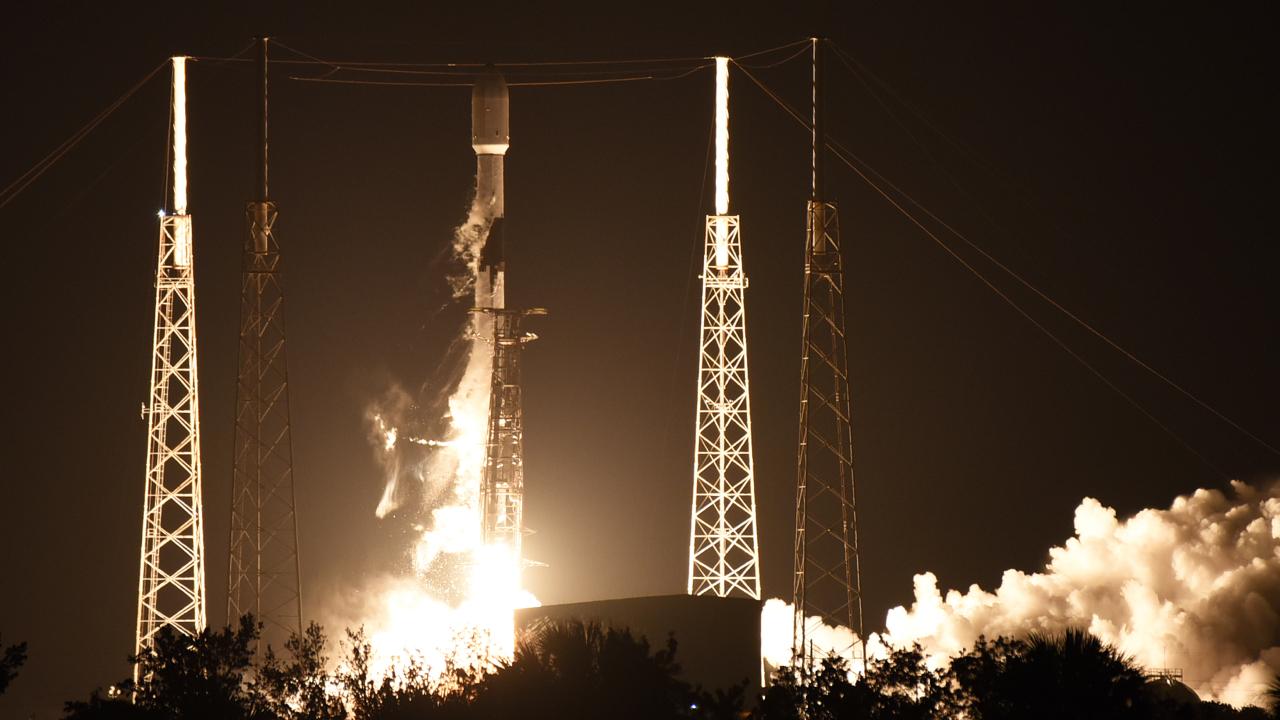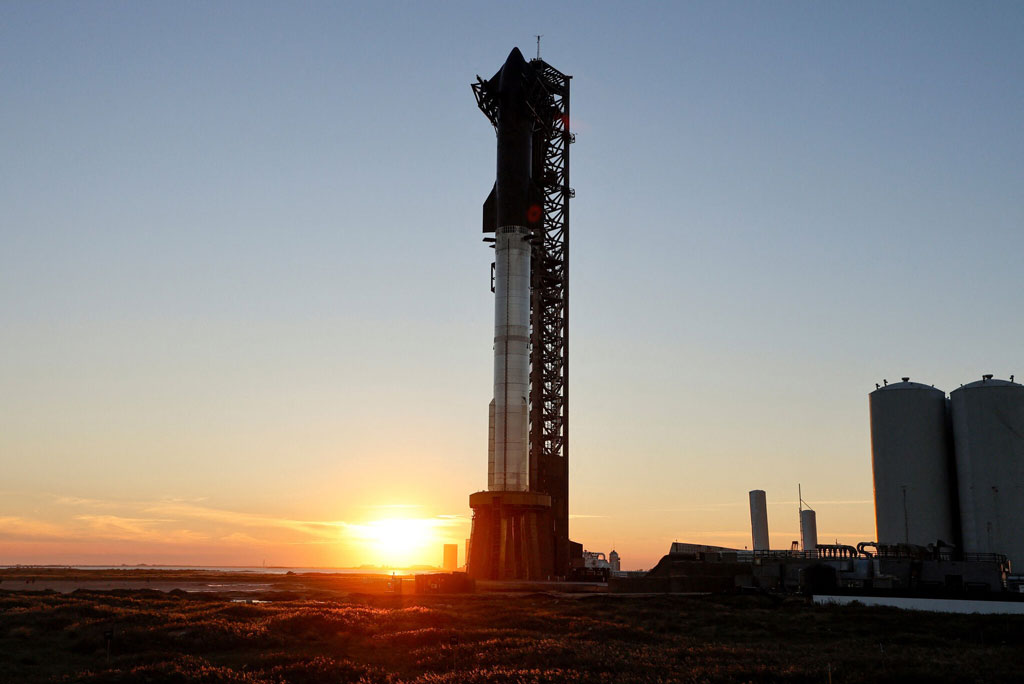Table of Contents
In the constantly shifting landscape of spacefaring ambition, SpaceX remains a bold brushstroke on the canvas. Their Starship rocket recently inscribed a fresh chapter in aerospace history. One seemingly ordinary morning, the skies of South Texas played host to an extraordinary feat: the third test flight of SpaceX’s Starship, a vessel carrying the weight of humankind’s dreams among the stars.
This launch tells a story of both victory and challenge. The Starship, a titan of modern engineering, rose with unexpected elegance, slicing the atmosphere to meet the cosmos in a sequence both precise and daring. This test, on March 14, 2024, was Starship’s maiden voyage into orbit, signaling a potential turning point in space travel.
However, the enormous craft’s journey was not without a brush against disaster. During the fiery reentry, silence descended. Contact with the Starship faltered, a stark reminder of the fragile boundary between triumph and disappointment in this audacious field. Nonetheless, the mission yielded a wealth of invaluable information, lessons that will shape the missions to come.
SpaceX Starship: Building Lunar Bases, Delivering Satellites, and Global Travel
SpaceX crafts its innovations like a sculptor, relentlessly refining rough ideas into the sleek realities of the future. Every test, every launch offers hard-won lessons – from both successes and fiery setbacks. Their constant updates meticulously chart their dance of engine maneuvers and stage separations – a complex orchestration of progress and setbacks within the larger story of space travel.
As we stand at the cusp of a new age, the cosmos calls to us with its secrets. SpaceX’s Starship serves as a monument to human ingenuity, a proof of our unyielding pursuit of the stars. Though the journey ahead is undeniably perilous, we watch with unwavering anticipation, our eyes fixed on the heavens, hearts ablaze with the potential of what lies beyond.
For those seeking a tangible link to this cosmic endeavor, a die-cast model of the Starship brings the dream home. It’s a miniature reminder, not just of our goals, but of the unstoppable spirit that drives us ever outward, into the boundless reaches of space and our own potential.

What Are Some of The Challenges SpaceX Faces?
SpaceX, a pioneer in the realm of commercial spaceflight, must confront a myriad of obstacles as it strives to guide humanity into an era where planets, not just continents, are our home. Let’s explore some of the most significant hurdles in their path:
- Commercial Market Volatility: The commercial space industry, while vibrant, can be fickle. SpaceX must successfully manage potential downturns in this market, ensuring a consistent flow of contracts to sustain its ambitious expansion.
- Military Market Competition: Military contracts are a cornerstone of SpaceX’s financial strength. Yet, securing and maintaining a foothold within this market demands navigating a maze of regulations and facing off against fierce rivals.
- Civil Space Security: As SpaceX ramps up launch activity, safeguarding the integrity of civilian space operations grows increasingly vital. This includes responsible satellite deployment and careful space traffic management to mitigate the risk of collisions.
- Balancing Costs and Profits: Though a successful enterprise, SpaceX must constantly strive for greater profitability. Striking an equilibrium between the expenditures of bold projects like Starship or Starlink and revenue from launches and services is key.
- Massive Funding Needs: Visions as grand as a Martian colony demand substantial financial backing. Attracting and effectively managing the vast capital reserves necessary for such an undertaking is a continuous struggle for SpaceX.
- Navigating Regulations: Plans like SpaceX’s Starlink project encounter regulatory roadblocks. Securing permission for more satellite launches and responsibly handling the increased congestion of space are constant battles.
- Bureaucratic Obstacles: Obtaining licenses and approvals, particularly for groundbreaking programs like Starship, can be hampered by bureaucratic inertia, potentially slowing the speed of innovation.
These complex challenges create the complex landscape that space exploration must navigate as it redefines the frontiers of space exploration forever. Every obstacle becomes a catalyst for new solutions and growth, demonstrating the company’s unwavering spirit and determination to realize its extraordinary vision.
Did NASA Give Spacex Permission to Launch it?
NASA has indeed authorized SpaceX to conduct the launch of the Starship. This validation manifested through the triumphant trial flight of SpaceX’s Super Heavy booster and Starship upper stage on March 14, 2024, marking a substantial stride towards leveraging Starship for NASA’s Artemis expeditions to the lunar surface.
Moreover, the Federal Aviation Administration (FAA) has bestowed upon SpaceX the authorization to launch its Starship craft, paving the way for an inaugural flight potentially scheduled for as early as April 2024.
Is SpaceX From Usa?
Space Exploration Technologies Corporation, better known as SpaceX, is an American aerospace manufacturer headquartered in Hawthorne, California. Established in 2002 by Elon Musk, the company pursues an ambitious objective: to lower the cost of spaceflight and ultimately enable the creation of a sustainable colony on Mars.
This mission has propelled groundbreaking advancements, including the creation of the Falcon 9 and Falcon Heavy launch vehicles, along with the Dragon and Starship spacecraft. SpaceX additionally manages Starlink, a sprawling satellite constellation exceeding 5,000 satellites, designed to deliver internet services.
Their fully reusable, colossal launch vehicle, Starship, outclassed prior rockets in both scale and capability during its initial test flight in April of 2023. Furthermore, SpaceX holds a historic distinction as the first privately-owned enterprise to send astronauts to the International Space Station and revolutionized the industry with previously unimaginable vertical booster landings.

Where is SpaceX Launch Located?
Here are some of them;
Kennedy Space Center (KSC):
Kennedy Space Center is located in Florida, USA.
Launch Complex 39A (LC39A): Previously used for Apollo missions and Space Shuttle launches, this historic launch complex has been modified to support SpaceX’s Falcon 9 and Falcon Heavy rockets. Most of SpaceX’s launches take place here.
Purpose: LC39A supports both commercial satellite launches and crewed missions using the Dragon spacecraft.
South Texas Launch Site (Boca Chica):
Location: This private rocket manufacturing facility, test site and spaceport is located just outside Brownsville, Texas.
Purpose: It serves as a test site for SpaceX’s Starship development and other rocket-related activities.
Who is The Owner of SpaceX?
SpaceX owes its existence and relentless drive to Elon Musk. In 2002, he established the company with the bold mission of revolutionizing space travel, aiming to increase affordability and open wider possibilities.
Musk’s dual roles as Chief Executive Officer and Chief Technology Officer see him actively shaping the company’s direction, spearheading technological advancements, and influencing key strategic choices. Furthermore, his position as a significant investor in SpaceX underscores his commitment, with a substantial portion of the company under his ownership.
Who Stands Behind SpaceX? The Mastermind Fueling the Spaceflight Revolution
The word “SpaceX” itself conjures visions of powerful rockets ascending into the skies, astronauts boldly pushing boundaries. Yet, beneath the spectacle lies a singular, unwavering force – a pioneering entrepreneur whose identity is inseparable from the company’s extraordinary trajectory.
That mastermind is none other than Elon Musk. Born in South Africa, educated in Canada, and a relentless powerhouse within American industry, Musk’s influence permeates SpaceX.
Dismayed by the sluggish advancement of space exploration and its astronomical costs, Musk established SpaceX in 2002. Where others perceived unyielding barriers, he envisioned a chance begging to be grasped. Staking his own wealth, he invested heavily in a venture founded on a seemingly radical idea: reusable rockets could dramatically reduce costs and unlock the cosmos for commercial exploration.
The journey was fraught with peril. Early Falcon 1 launches met with catastrophic failures, drawing scorn from critics and predictions of financial ruin. Through these ordeals, however, Musk’s position as both CEO and Chief Engineer proved essential. Refusing to merely bankroll the project, he immersed himself in technical complexities, relentlessly pushing his team forward.

Elon Musk’s SpaceX: From Bold Dreams to Cosmic Reality
His risk bore fruit. SpaceX triumphed as the first private company to both send a spacecraft into orbit and successfully recover it, followed by the historic docking of a commercial spacecraft with the International Space Station. These achievements surpassed mere engineering marvels; they redefined space travel, once the sole province of governments.
Yet, Musk’s ambition soars far beyond our planet. His relentless drive, and by extension, the spirit of SpaceX, is fueled by the bold dream of establishing a self-sufficient Martian colony. This goal may seem like science fiction, but with its formidable Starship system, SpaceX is steadily laying the foundations.
Describing Elon Musk simply as the “owner” of SpaceX is a gross understatement. He is its beating heart, its guiding spirit, its unstoppable force. His vision, his technical brilliance, and his unwavering courage to risk it all have catapulted SpaceX to unprecedented heights. Whether hailed as a fearless visionary or a daring maverick, his impact on the future of space travel is indisputable.
SpaceX’s Starship: A Reusable Game-Changer for Earth and Beyond
Designed for complete reusability, SpaceX’s Starship revolutionizes space transportation, capable of ferrying both passengers and payloads to Earth’s orbit, lunar and Martian surfaces, and distant destinations beyond. The system comprises two key elements: the Starship spacecraft proper, and Super Heavy, its formidable first-stage booster.
Could SpaceX Have a Direct Connection With the Solar Eclipse?
SpaceX has no direct connection to solar eclipses in the sense that it causes them or studies them scientifically. But there are several ways in which solar eclipses are indirectly related:
Scientific Payloads: SpaceX rockets sometimes launch satellites for the purpose of studying the sun. Although not specifically focused on eclipses, these satellites can collect data on the Sun’s corona, which is most visible during a total solar eclipse.
Awareness: As a leader in space exploration, SpaceX helps increase general awareness and interest in astronomical events, including solar eclipses
The Future of Flight: SpaceX Starship
Starship, a spacecraft of impressive capabilities, boasts a 50-meter height and can transport a staggering 150 metric tonnes when operating in fully reusable mode. Moreover, it allows for point-to-point terrestrial travel, facilitating journeys anywhere across the globe in under an hour.
The Super Heavy booster, an engineering marvel in its own right, relies on 33 Raptor engines fueled by sub-cooled liquid methane and oxygen. Designed for full reusability, it will gracefully re-enter the atmosphere for pinpoint landings at its launch origin. This behemoth towers at 71 meters and possesses a propellant capacity of a remarkable 3,400 tonnes.
The heart of the Starship system lies in its Raptor engines, a collection of reusable staged-combustion powerhouses fueled by a methane-oxygen mixture. Starship itself will harness six Raptors: three standard engines, complemented by three Raptor Vacuum engines optimized for the harsh conditions of space.
Starship’s potential is vast. It envisions transporting up to 100 individuals on extended interplanetary voyages, deploying satellites, facilitating lunar base construction, and revolutionizing travel right here on Earth. Ultimately, Starship aims to push the boundaries of spaceflight, delivering payloads to greater distances with unprecedented affordability compared to existing Falcon launch vehicles.

